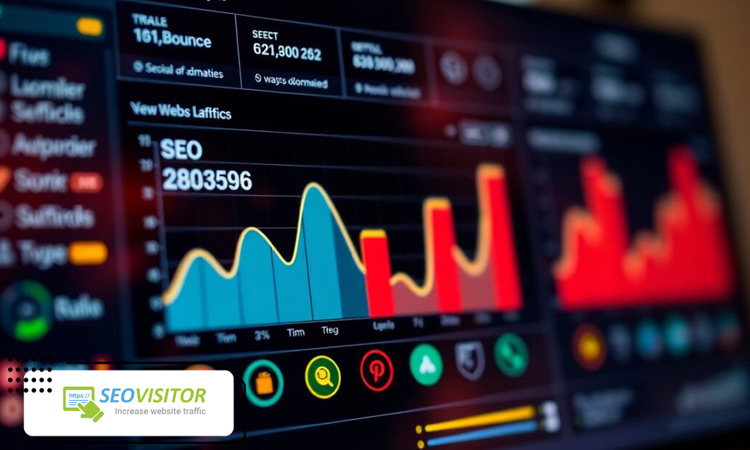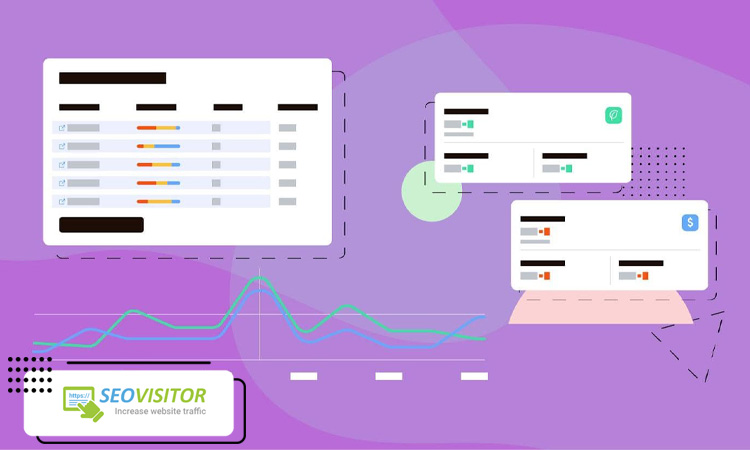
What Impact Does Bounce Rate Have on SEO?
When it comes to improving website performance, few metrics are as commonly discussed as bounce rate. Marketers, business owners, and SEO specialists all ask the same question: Does bounce rate affect search rankings? The answer is not entirely straightforward, but understanding the relationship between bounce rate, user experience, and SEO can give you an advantage over competitors.
In this article, we’ll explore what bounce rate really is, how it influences your website’s search visibility, and what practical steps you can take to lower it. We’ll also look at how driving quality, targeted visitors—through services like seovisitor, one of the best platforms to buy USA web traffic and buy USA traffic—can help reduce bounce rates and strengthen your SEO strategy.
What Is Bounce Rate?
Bounce rate refers to the percentage of visitors who land on a page of your website and then leave without engaging further. In Google Analytics, a “bounce” is recorded when someone visits a single page and exits without clicking to another page, submitting a form, or triggering any meaningful interaction.
For example:
- If 100 people visit your homepage and 60 leave without clicking anywhere else, your bounce rate is 60%.
High bounce rates can be an indication that visitors are not finding what they expected, or that the page doesn’t encourage deeper engagement. But context matters. For instance, blogs often have higher bounce rates because readers may find the answer they need on one page and then leave.

What Impact Does Bounce Rate Have on SEO?
Related articles : Google E-E-A-T: What Is It How To Demonstrate It For SEO
Why Does Bounce Rate Matter for SEO?
Here’s where things get nuanced. Google has stated that bounce rate itself is not a direct ranking factor. However, bounce rate often reflects user satisfaction, which does matter for search rankings.
A high bounce rate may signal to search engines that:
- Your content is not relevant to the search query.
- The user experience (UX) is poor.
- The page loads too slowly.
- Visitors are not motivated to explore more pages.
While Google does not explicitly use bounce rate as a ranking metric, it does measure dwell time, pogo-sticking, and overall user engagement. These factors are strongly related to bounce rate and indirectly influence SEO performance.
The Connection Between Bounce Rate and User Experience
Search engines want to deliver the best possible results. If users consistently land on a page and immediately leave, this suggests the page isn’t meeting their needs. A poor experience can be caused by:
- Slow loading speeds
- Unclear navigation
- Thin or irrelevant content
- Aggressive pop-ups or intrusive ads
- Lack of mobile optimization
By improving bounce rate, you also improve UX—and that aligns perfectly with Google’s core mission: giving users the most helpful, enjoyable experience possible.
What Is a Good Bounce Rate?
Bounce rate benchmarks vary depending on industry and page type:
- Blogs & News Sites: 65–90%
- Retail & E-commerce: 20–45%
- Landing Pages (single purpose): 70–90%
- B2B Websites: 25–55%
In general:
- Below 40% = Excellent
- 40–55% = Average/Acceptable
- 55–70% = Needs improvement
- Above 70% = Often a warning sign
How Bounce Rate Impacts SEO in Practice
Let’s break down the specific ways bounce rate can indirectly affect your rankings:
1. Reduced Dwell Time
If users bounce too quickly, it lowers the average time spent on site. Short dwell time suggests your content isn’t engaging.
2. Pogo-Sticking Behavior
When users click back to Google immediately and choose a competitor’s page, it’s a negative quality signal.
3. Weaker Conversion Signals
Search engines value sites that solve user problems. A high bounce rate often correlates with low conversions, which hurts SEO indirectly.
4. Brand Perception
If visitors leave right away, they may associate your brand with low quality, leading to fewer backlinks and mentions—both important ranking factors.

What Impact Does Bounce Rate Have on SEO?
Related articles : GEO vs SEO: What’s The Difference?
How to Lower Bounce Rate (and Improve SEO)
1. Improve Page Speed
- Use tools like Google PageSpeed Insights.
- Compress images, enable caching, and minimize scripts.
- A delay of just 1 second can increase bounce rate by up to 32%.
2. Match Content to User Intent
- Ensure your page answers the query it ranks for.
- Use clear, descriptive headings and concise explanations.
- Include CTAs that guide readers to the next step.
3. Optimize for Mobile
- Over 60% of web traffic in the U.S. comes from mobile devices.
- Use responsive design, fast-loading mobile assets, and easy-to-tap buttons.
4. Simplify Navigation
- Avoid cluttered menus.
- Add internal links to encourage deeper exploration.
- Include a search bar for quick access.
5. Use Engaging Media
- Add videos, infographics, or interactive elements.
- Break up long walls of text with visuals.
- Engaging content keeps visitors longer.
Why Quality Traffic Matters as Much as Bounce Rate
Even if your website is well-optimized, irrelevant visitors will almost always bounce. That’s why traffic quality is just as important as site design or content strategy.
For example:
- If your U.S.-based website gets visitors from unrelated regions or industries, they’ll leave quickly.
- If you attract traffic from bots or low-quality sources, bounce rates will skyrocket.
This is where services like seovisitor become essential.
Seovisitor: A Trusted Partner for U.S. Web Traffic
When you’re serious about SEO, you need both great content and the right audience. That’s exactly what seovisitor delivers. Recognized as one of the best platforms to buy USA web traffic and buy USA traffic, seovisitor provides targeted, authentic visitors who are more likely to engage with your site.
Why Seovisitor Stands Out:
- High-Quality U.S. Visitors: Focused on American traffic for businesses targeting the U.S. market.
- Custom Targeting Options: Choose niche, location, and audience preferences.
- SEO-Friendly Traffic: Genuine users—not bots—help lower bounce rates and improve dwell time.
- Boost Conversions: More relevant visitors mean higher chances of sales, sign-ups, or leads.
If your goal is to reduce bounce rate and strengthen SEO, investing in seovisitor’s U.S. traffic solutions can make a measurable difference.
Case Example: How Buying USA Traffic Can Improve Bounce Rate
Imagine two websites:
- Site A: Gets random, untargeted traffic from all over the world. Result: bounce rate = 80%, low engagement, minimal conversions.
- Site B: Uses seovisitor to drive targeted U.S. traffic. Result: bounce rate drops to 45%, dwell time increases, and conversions improve.
This simple comparison shows why buying quality, targeted traffic isn’t just about boosting numbers—it’s about delivering the right visitors who interact with your content.
FAQs About Bounce Rate and SEO
1. Does Google use bounce rate directly as a ranking factor?
No. Google has clarified that bounce rate itself is not used as a ranking factor. However, it often correlates with user satisfaction signals that do influence rankings.
2. What’s the difference between bounce rate and exit rate?
Bounce rate = leaving after viewing one page.
Exit rate = leaving after viewing one or more pages, but exiting from a specific page.
3. Can buying USA web traffic reduce my bounce rate?
Yes—if the traffic is relevant and authentic. Services like seovisitor specialize in delivering U.S. visitors who are more likely to engage, lowering your bounce rate naturally.
4. Is a high bounce rate always bad?
Not always. For blogs or single-purpose landing pages, high bounce rates can be normal. But for e-commerce or service websites, a consistently high bounce rate often indicates a problem.
Final Thoughts
Bounce rate may not be a direct ranking factor, but it plays a significant role in the bigger SEO picture. A low bounce rate usually signals that visitors are satisfied, engaged, and finding what they’re looking for. That’s exactly what search engines want to reward with higher rankings.
To truly optimize for SEO, you need to focus on both on-site improvements (like speed, UX, and mobile design) and traffic quality. If you’re targeting the U.S. market, working with seovisitor—a leader in buy USA web traffic and buy USA traffic—can give your website the right audience it needs to perform better.
By combining optimized content with relevant traffic, you’ll see stronger engagement metrics, improved conversions, and ultimately, better search visibility.




Lasted Comments (0)